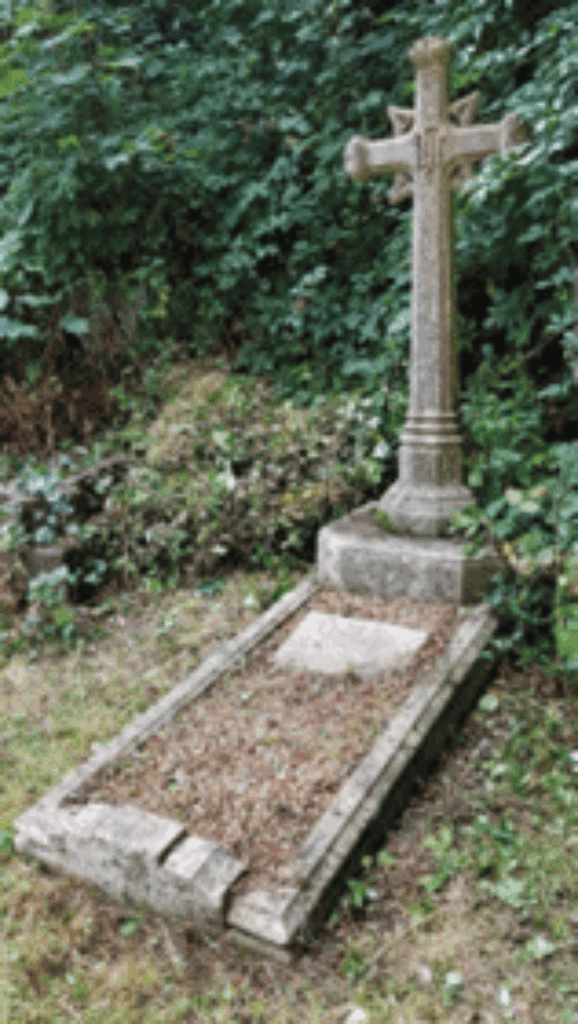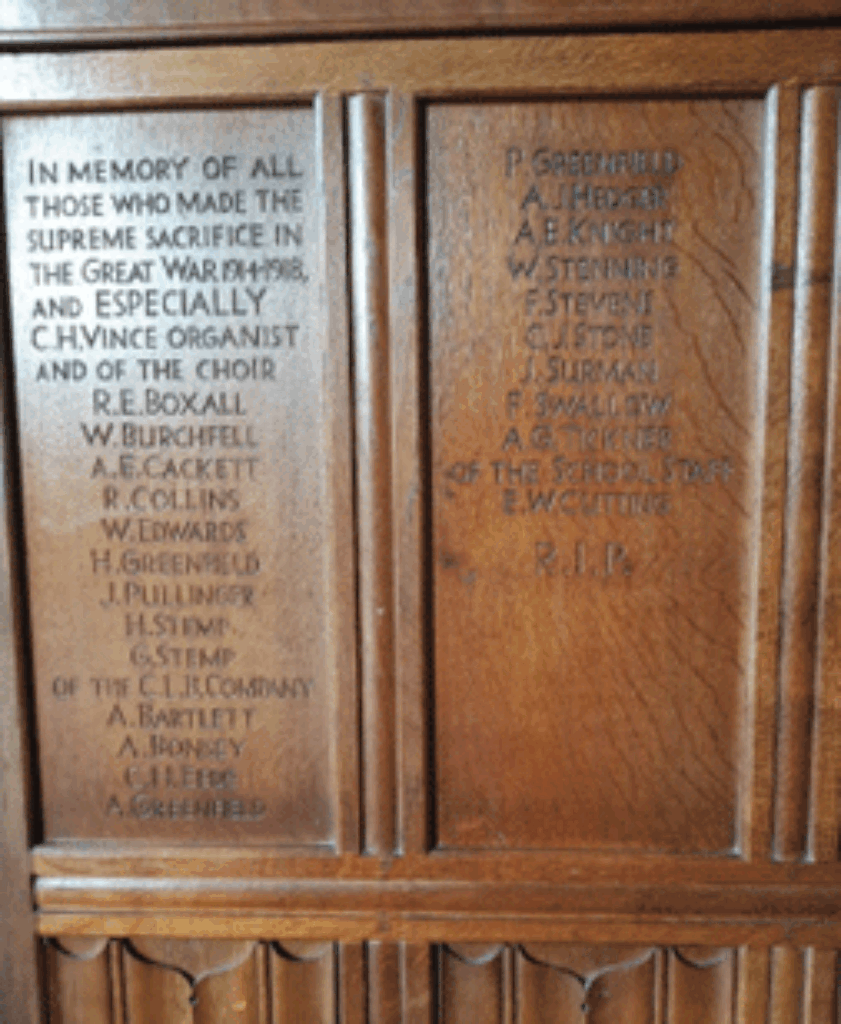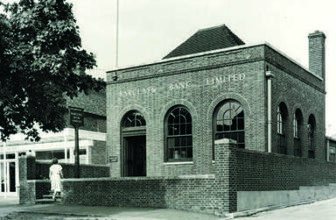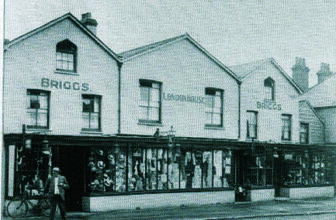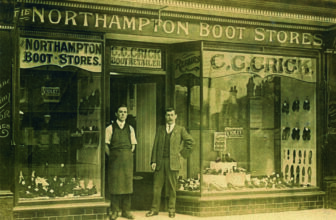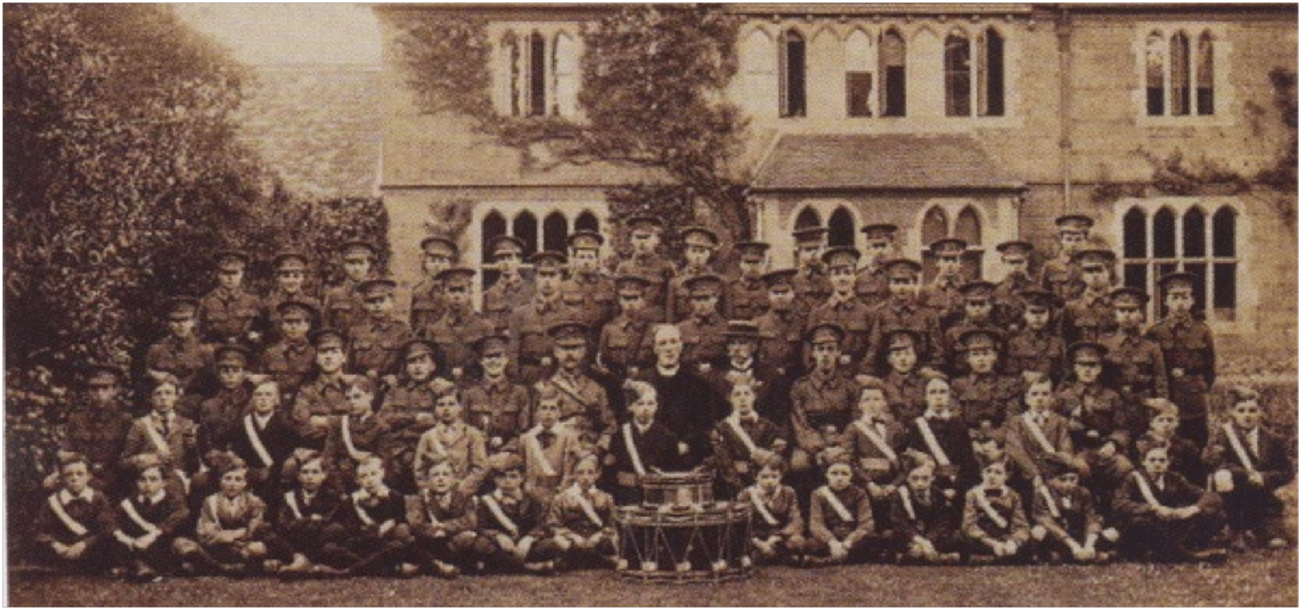
By Joy Horn Featured image – The flourishing Church Lads’ Brigade in front of the Rectory, before 1914
This walk starts at the south porch of the parish church and takes in some of the sites connected with the First World War, 1914-18. It is about three-quarters of a mile long, with several seats along the way.
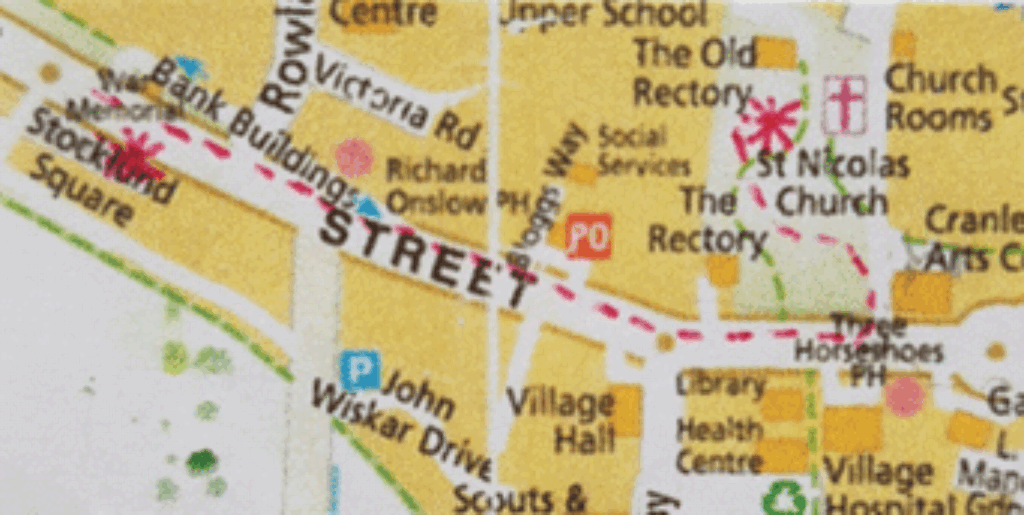
From the church porch, go round the church clockwise, until you have a view of Moat Lodge (sheltered housing), which was the Rectory 1863-1986. The photo shows the Church Lads’ Brigade, with its leaders and the rector, the Revd. Philip Cunningham. This military-style organisation was very popular with boys because they went away to camp in tents, carried out ‘exercises’ on Winterfold – and not least because they trained with real guns! When the war started, all those of military age enlisted immediately.
Go back on the path. Near the west end of the church, close to the hedge, you should see a grave with a cross. This marks the burial of Frank Gustavus Naumann, of Redhurst, off Knowle Lane. A wealthy businessman, he was returning from New York on the ocean liner Lusitania, when it was torpedoed by a German U-boat on May 7th 1915, off the south coast of Ireland. About 1,198 passengers and crew were drowned. Naumann’s body was among the few that were recovered and identified. The Lusitania is not mentioned on the grave, but its sinking caused international outrage and helped bring the United States into the war.
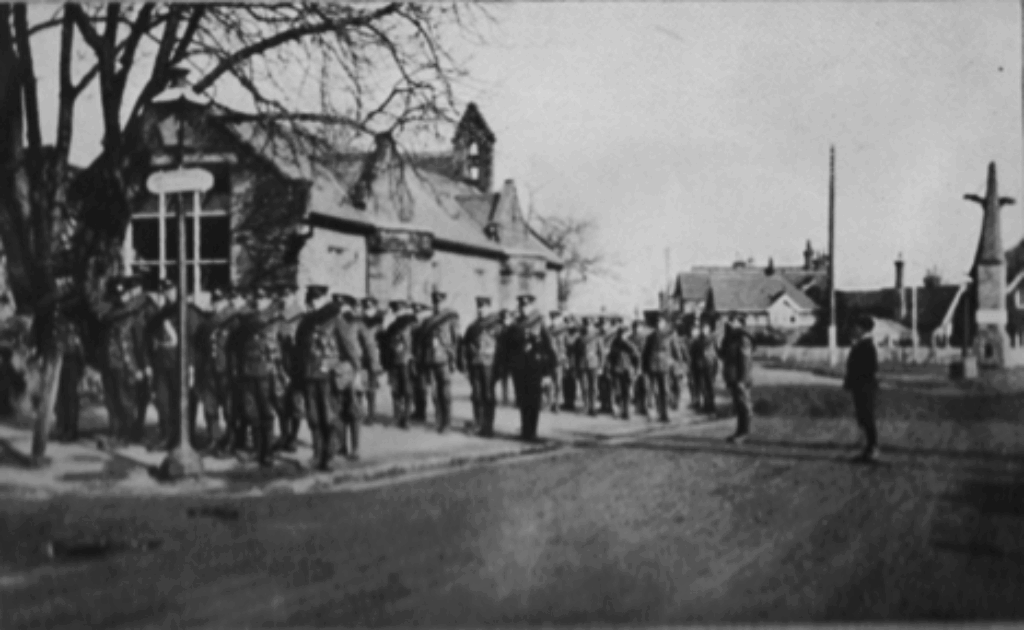
Make a brief visit inside the church. Behind the choir stalls, on the right-hand wall, is a war memorial to the church musicians and Church Lads’ Brigade members. Thirteen of the CLB are listed, but others are listed under the heading of the choir. Charles Vince, the organist, died in appalling heat in Mesopotamia. Go to the right-hand (south) aisle, by the steps, where there is a wall plaque to the three Greenfield boys (all in the CLB), who died in the battle of the Somme (1916). Above this is a basic wooden cross, used to mark the grave of a soldier who died on a battlefield and was buried by his friends.
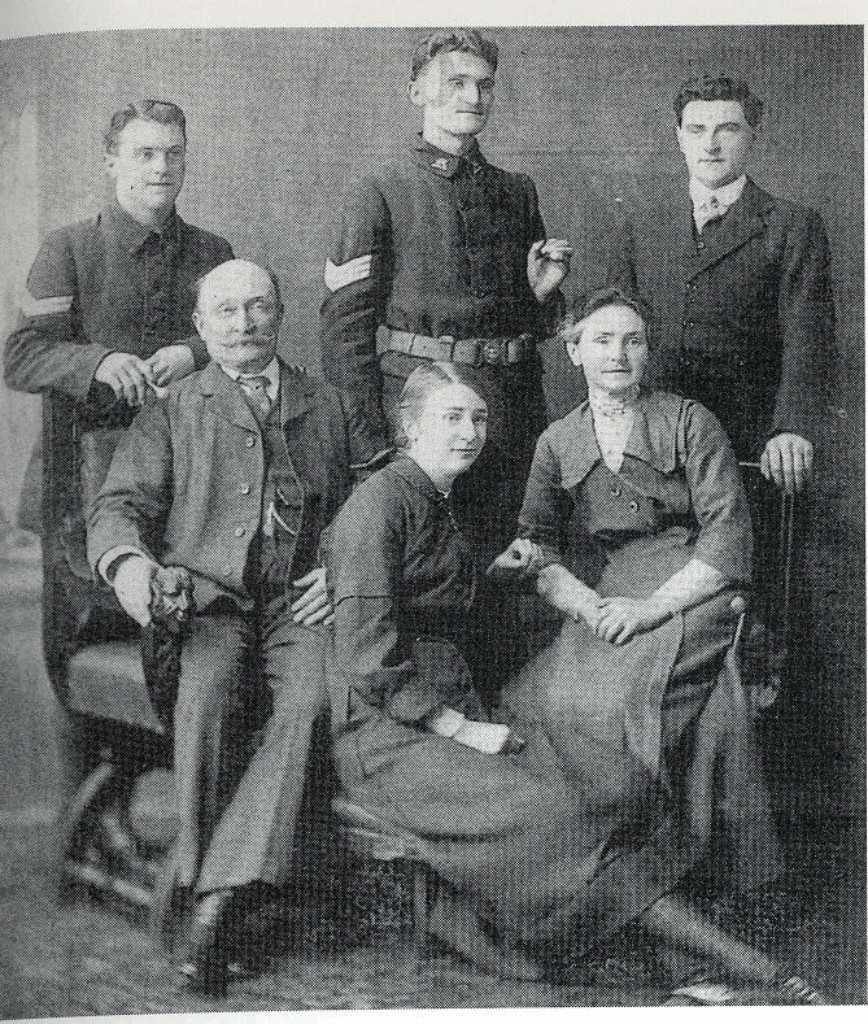
Go out of the churchyard through the lych gate, and turn right twice to go along the High Street. The soldiers in the photo have been on church parade. They are members of the 5th Battalion, the Oxfordshire and Buckinghamshire Light Infantry, who spent some months in Cranleigh at the beginning of the war, doing their initial training. They were billeted in local homes, where housewives were paid 17s 6d per week for each soldier.
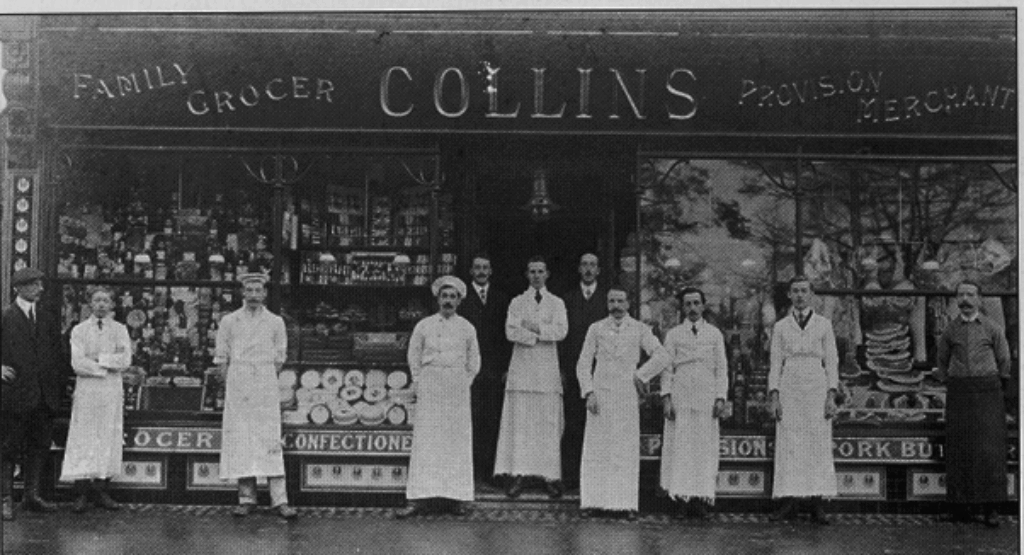
On the right you will come to Collins Court, formerly Collins butchers and grocers for a century. ‘Collins sausages’, a Cranleigh speciality now sold in Rawlings, originated here. Robert Collins, who was listed on the choir memorial in the church, also took the lead in many village plays and musicals.
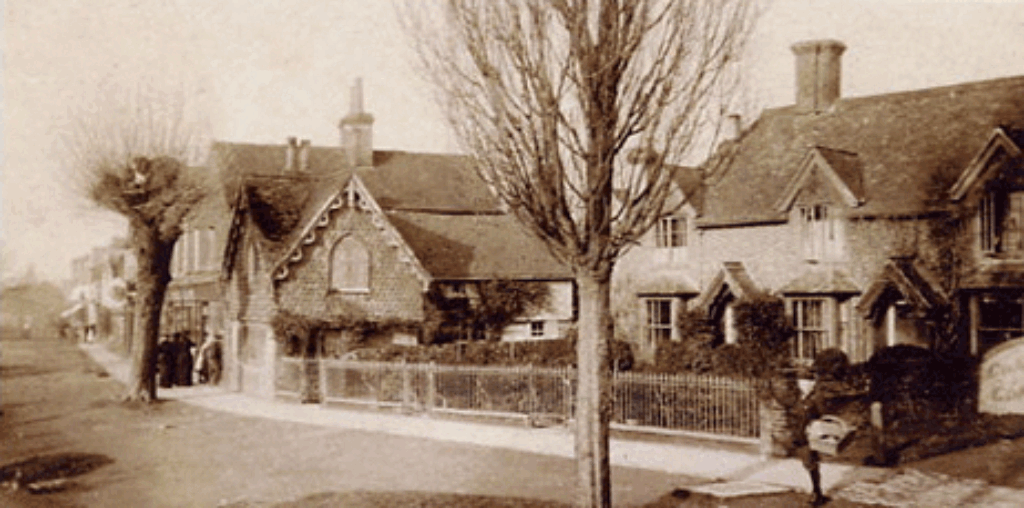
On the opposite side of the road is the Village Hall, built in 1933 as a memorial to those who died. Further on, on the right, is Oliver House (currently empty), home of Jesse J. Mann, youngest son of David Mann. Four men of the Ox. & Bucks. were billeted here. Jesse later served on the Western Front and was seriously gassed.
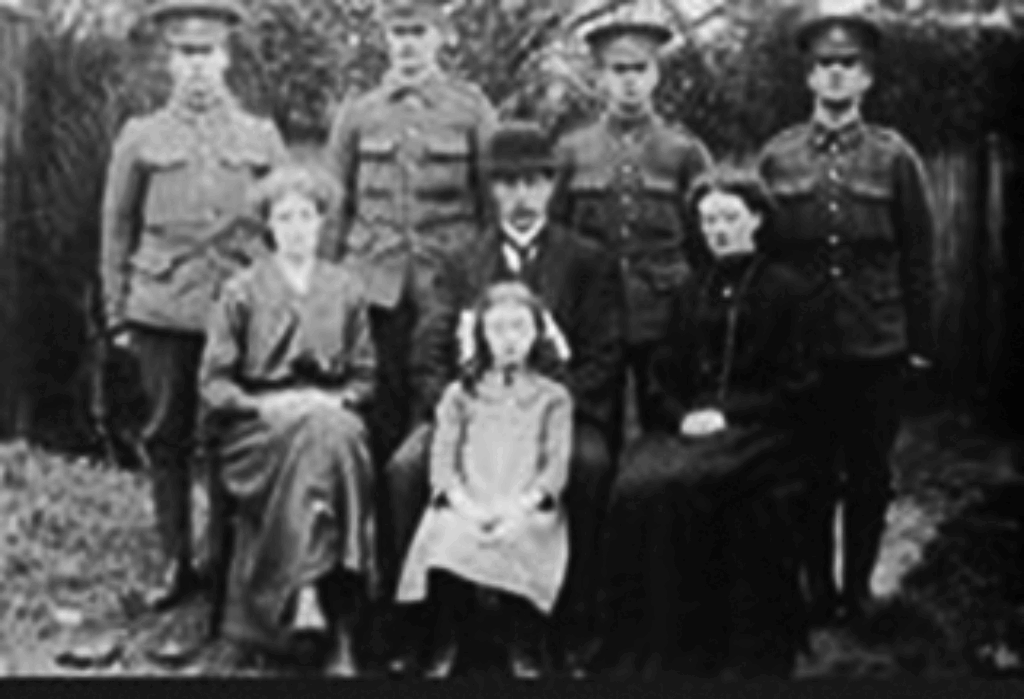
By the sign of the ‘Onslow Arms’, a six-inch Howitzer was stationed for a week to encourage people to buy War Bonds and War Certificates. It was an enormous success, exceeding the target of £11,000 to raise £40,000. A Howitzer had a short muzzle, whose shot went steeply upwards and then steeply down.
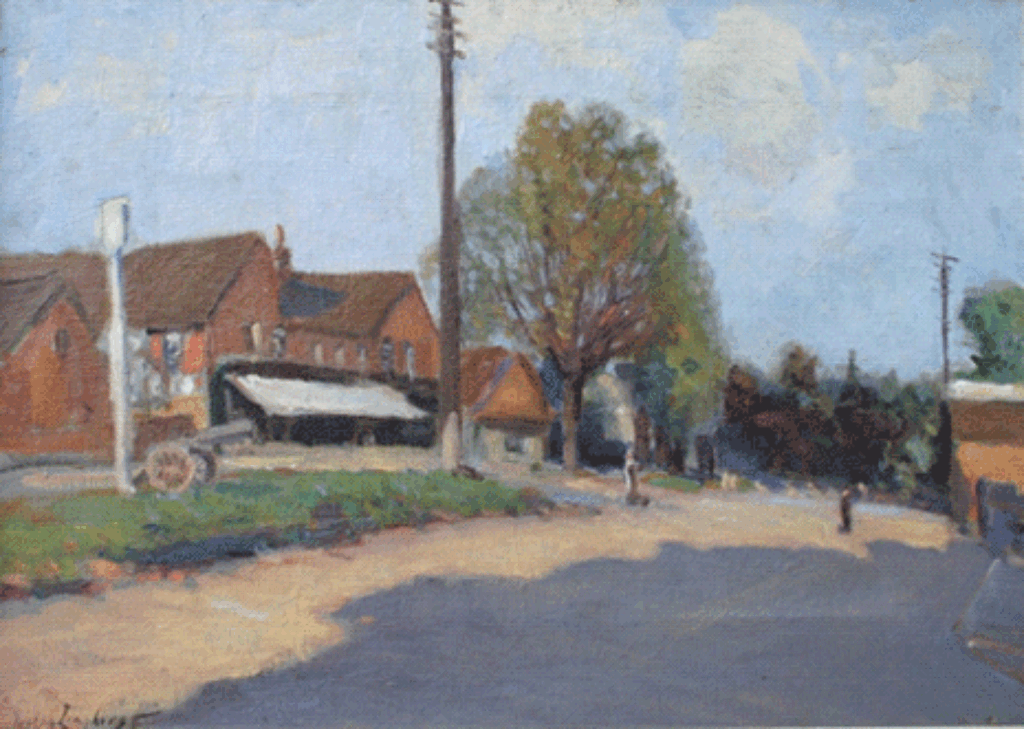
In the same area, crowds gathered on Wednesday September 2nd 1914 when about 50 volunteers were taken in cars to Guildford to enlist. Family and friends waved them off. The regiment of choice was the Royal West Surrey (The Queen’s), though Cranleigh men served in many other regiments too.
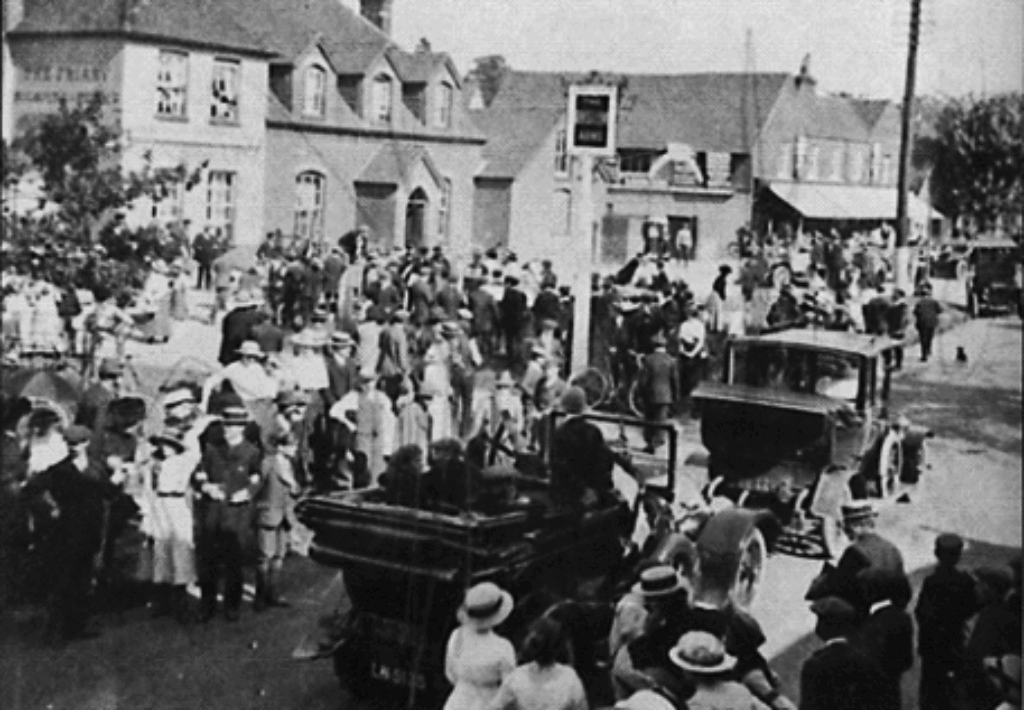
As you pass the Oxfam shop, remember that at the time of WW1, this was Charles Crick’s Northampton Boot Store. His son Rennie kept a war diary, which is a graphic and moving account of his service in the Royal Army Medical Corps.
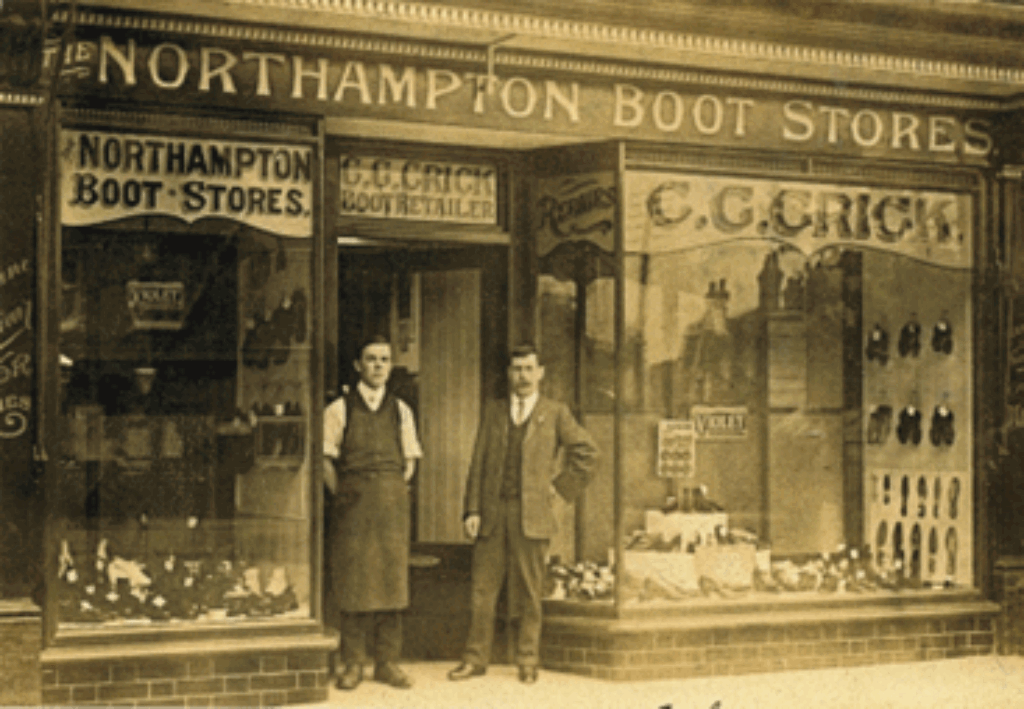
At last, on November 11th 1918, the Armistice was signed. How did Cranleigh people learn about this, in days before social media, television or even radio? The answer is, in a very low-key way. The news was telephoned to the post office at the corner of Knowle Lane, and the postmaster put a notice in the window. The news then spread swiftly from person to person. Schools cancelled further lessons, the church bell-ringers were rustled up to ring joyful peals, and impromptu church services were held that evening.
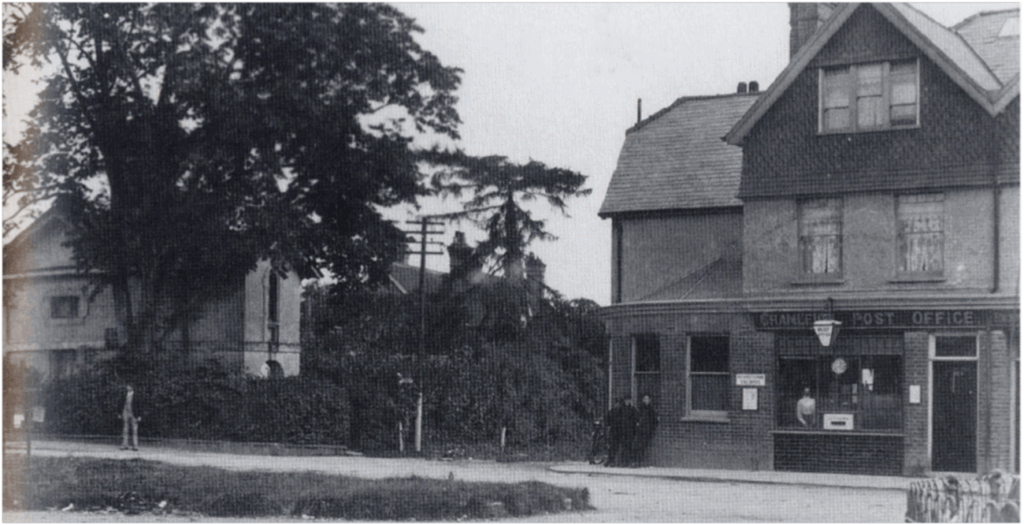
The walk ends at the war memorial, put up in 1920, a dignified commemoration of a horrific war.
The Cranleigh History Society meets on the second Thursday of each month at 8pm in the Band Room. The next meeting, on Thursday June 8th, is an outing to Abbot’s Hospital, Guildford (members only).

